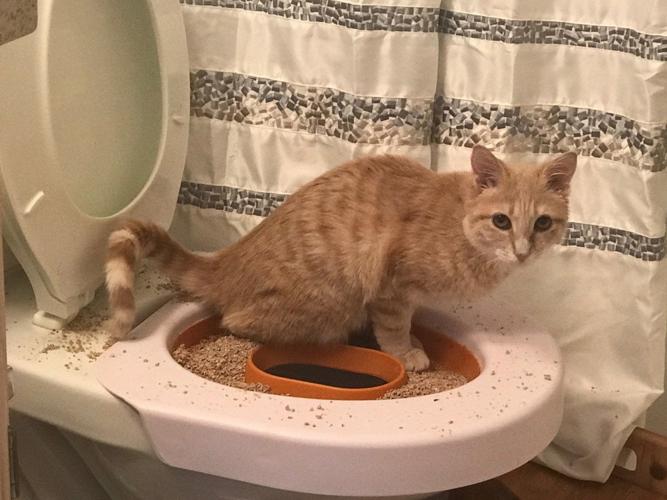Reasons Flushing Cat Poop Down Your Toilet Can Cause Problems - Tips for Safe Disposal
Reasons Flushing Cat Poop Down Your Toilet Can Cause Problems - Tips for Safe Disposal
Blog Article
The author is making a number of good pointers related to How to Dispose of Cat Poop and Litter Without Plastic Bags as a whole in this great article on the next paragraphs.

Intro
As pet cat proprietors, it's necessary to be mindful of exactly how we take care of our feline buddies' waste. While it may seem practical to flush feline poop down the bathroom, this method can have damaging repercussions for both the atmosphere and human health and wellness.
Alternatives to Flushing
Thankfully, there are much safer and much more responsible ways to throw away cat poop. Take into consideration the following alternatives:
1. Scoop and Dispose in Trash
One of the most common method of taking care of cat poop is to scoop it right into a naturally degradable bag and toss it in the trash. Be sure to utilize a dedicated trash inside story and get rid of the waste promptly.
2. Use Biodegradable Litter
Select eco-friendly cat litter made from materials such as corn or wheat. These trashes are eco-friendly and can be securely disposed of in the garbage.
3. Hide in the Yard
If you have a yard, consider burying pet cat waste in a marked location far from vegetable gardens and water sources. Make sure to dig deep adequate to prevent contamination of groundwater.
4. Install a Pet Waste Disposal System
Invest in a family pet garbage disposal system especially created for pet cat waste. These systems utilize enzymes to break down the waste, minimizing odor and environmental impact.
Health Risks
Along with ecological worries, flushing cat waste can additionally present health and wellness risks to human beings. Feline feces may have Toxoplasma gondii, a bloodsucker that can cause toxoplasmosis-- a possibly serious illness, especially for pregnant females and individuals with damaged immune systems.
Ecological Impact
Flushing feline poop presents unsafe pathogens and bloodsuckers right into the water system, posing a considerable threat to water ecosystems. These impurities can negatively influence marine life and compromise water top quality.
Conclusion
Liable family pet ownership prolongs past supplying food and sanctuary-- it also involves proper waste administration. By refraining from purging cat poop down the commode and going with alternative disposal methods, we can lessen our ecological impact and shield human health.
Why Can’t I Flush Cat Poop?
It Spreads a Parasite
Cats are frequently infected with a parasite called toxoplasma gondii. The parasite causes an infection called toxoplasmosis. It is usually harmless to cats. The parasite only uses cat poop as a host for its eggs. Otherwise, the cat’s immune system usually keeps the infection at low enough levels to maintain its own health. But it does not stop the develop of eggs. These eggs are tiny and surprisingly tough. They may survive for a year before they begin to grow. But that’s the problem.
Our wastewater system is not designed to deal with toxoplasmosis eggs. Instead, most eggs will flush from your toilet into sewers and wastewater management plants. After the sewage is treated for many other harmful things in it, it is typically released into local rivers, lakes, or oceans. Here, the toxoplasmosis eggs can find new hosts, including starfish, crabs, otters, and many other wildlife. For many, this is a significant risk to their health. Toxoplasmosis can also end up infecting water sources that are important for agriculture, which means our deer, pigs, and sheep can get infected too.
Is There Risk to Humans?
There can be a risk to human life from flushing cat poop down the toilet. If you do so, the parasites from your cat’s poop can end up in shellfish, game animals, or livestock. If this meat is then served raw or undercooked, the people who eat it can get sick.
In fact, according to the CDC, 40 million people in the United States are infected with toxoplasma gondii. They get it from exposure to infected seafood, or from some kind of cat poop contamination, like drinking from a stream that is contaminated or touching anything that has come into contact with cat poop. That includes just cleaning a cat litter box.
Most people who get infected with these parasites will not develop any symptoms. However, for pregnant women or for those with compromised immune systems, the parasite can cause severe health problems.
How to Handle Cat Poop
The best way to handle cat poop is actually to clean the box more often. The eggs that the parasite sheds will not become active until one to five days after the cat poops. That means that if you clean daily, you’re much less likely to come into direct contact with infectious eggs.
That said, always dispose of cat poop in the garbage and not down the toilet. Wash your hands before and after you clean the litter box, and bring the bag of poop right outside to your garbage bins.
https://trenchlesssolutionsusa.com/why-cant-i-flush-cat-poop/

I am very eager about Can You Flush Cat Poo or Litter Down the Toilet? and I'm hoping you enjoyed our article. Liked our posting? Please share it. Let somebody else locate it. We appreciate reading our article about Don’t flush cat feces down the toilet.
Services Report this page